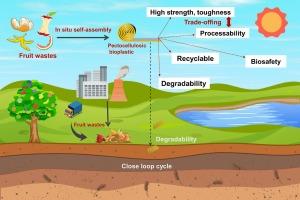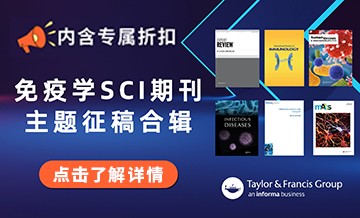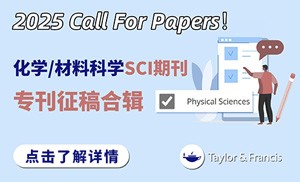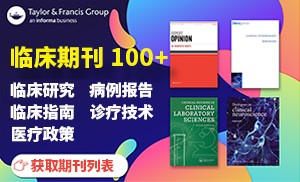当前位置:
X-MOL 学术
›
Chem. Eng. J.
›
论文详情
Our official English website, www.x-mol.net, welcomes your
feedback! (Note: you will need to create a separate account there.)
Non-covalent in situ self-assembly of fruit peel waste into eco-friendly pectocellulosic bioplastics with high strength, flexibility and processability properties
Chemical Engineering Journal ( IF 13.3 ) Pub Date : 2024-12-17 , DOI: 10.1016/j.cej.2024.158697
Shikai Zhang , Houshen Li , Bowen Zhang , Shiyun Ai , Yang Shan , Shenghua Ding
Chemical Engineering Journal ( IF 13.3 ) Pub Date : 2024-12-17 , DOI: 10.1016/j.cej.2024.158697
Shikai Zhang , Houshen Li , Bowen Zhang , Shiyun Ai , Yang Shan , Shenghua Ding

|
Converting fruit peel wastes into degradable bioplastics has brought dawn to solve the severe plastic pollution and inefficient organic food waste management. However, it remains a challenge to convert peel wastes into bioplastics without decomposing their biocomponents. Furthermore, most of the bioplastics currently being researched have poor performance, especially in terms of trade-offing high strength, toughness, and good processability. Here, we utilize a noncovalent-mediated design to convert peel waste into pectocellulosic bioplastic that features the in situ ordered self-assembly of cellulose and pectin in the peel into a structure similar to a carboxylic acid dimer via hydrogen bonding. Benefiting from efficient energy dissipation mechanisms and reversible hydrogen bonding interactions, pectocellulosic bioplastics exhibit excellent mechanical properties (superior to most petrochemical-based and bio-based plastic materials), and can be molded into 2D/3D shapes or reprocessed into new plastics, realizing a combination of high strength (up to 50.5 MPa), toughness (up to 5.1 MJ/m3 ) and good processability. These bioplastics also combine biosafety (48 h cell viability > 85 %), biodegradability, and durability. Based on these characteristics, these pectocellulosic bioplastics can be considered as a candidate for petrochemical plastics, particularly suitable for some sensitive applications such as food inner packaging. Excitingly, the universality of this strategy in a variety of peel wastes has been verified. This work highlights the transformative potential of converting peel waste into valuable materials, providing a sustainable solution to plastic pollution and organic waste management.
中文翻译:

将果皮废料非共价原位自组装成环保的果胶纤维素生物塑料,具有高强度、柔韧性和可加工性
将果皮废料转化为可降解的生物塑料为解决严重的塑料污染和低效的有机食物垃圾管理带来了曙光。然而,在不分解其生物成分的情况下将果皮废料转化为生物塑料仍然是一个挑战。此外,目前正在研究的大多数生物塑料性能不佳,尤其是在权衡高强度、韧性和良好的加工性能方面。在这里,我们利用非共价介导的设计将果皮废物转化为果胶纤维素生物塑料,其特点是通过氢键将果皮中的纤维素和果胶原位有序自组装成类似于羧酸二聚体的结构。得益于高效的能量耗散机制和可逆的氢键相互作用,胸纤维素生物塑料表现出优异的机械性能(优于大多数石化和生物基塑料材料),可以模塑成 2D/3D 形状或再加工成新塑料,实现高强度(高达 50.5 MPa)、韧性(高达 5.1 MJ/m3)和良好的加工性能。这些生物塑料还结合了生物安全性(48 小时细胞活力 > 85%)、生物降解性和耐用性。基于这些特性,这些果胶纤维素生物塑料可以被认为是石化塑料的候选材料,特别适用于食品内包装等一些敏感应用。令人兴奋的是,这种策略在各种果皮废料中的普遍性已经得到验证。这项工作突出了将果皮废料转化为有价值材料的变革潜力,为塑料污染和有机废物管理提供了可持续的解决方案。
更新日期:2024-12-17
中文翻译:

将果皮废料非共价原位自组装成环保的果胶纤维素生物塑料,具有高强度、柔韧性和可加工性
将果皮废料转化为可降解的生物塑料为解决严重的塑料污染和低效的有机食物垃圾管理带来了曙光。然而,在不分解其生物成分的情况下将果皮废料转化为生物塑料仍然是一个挑战。此外,目前正在研究的大多数生物塑料性能不佳,尤其是在权衡高强度、韧性和良好的加工性能方面。在这里,我们利用非共价介导的设计将果皮废物转化为果胶纤维素生物塑料,其特点是通过氢键将果皮中的纤维素和果胶原位有序自组装成类似于羧酸二聚体的结构。得益于高效的能量耗散机制和可逆的氢键相互作用,胸纤维素生物塑料表现出优异的机械性能(优于大多数石化和生物基塑料材料),可以模塑成 2D/3D 形状或再加工成新塑料,实现高强度(高达 50.5 MPa)、韧性(高达 5.1 MJ/m3)和良好的加工性能。这些生物塑料还结合了生物安全性(48 小时细胞活力 > 85%)、生物降解性和耐用性。基于这些特性,这些果胶纤维素生物塑料可以被认为是石化塑料的候选材料,特别适用于食品内包装等一些敏感应用。令人兴奋的是,这种策略在各种果皮废料中的普遍性已经得到验证。这项工作突出了将果皮废料转化为有价值材料的变革潜力,为塑料污染和有机废物管理提供了可持续的解决方案。







































 京公网安备 11010802027423号
京公网安备 11010802027423号